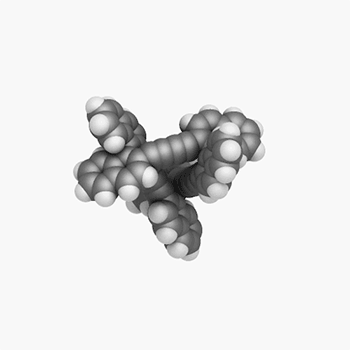Sorry if the explanation is very long (it's actually very simple), I had to make sure people would be able to fully understand what was going on. If it was shorter, there could be lots of confusion.
The #x#-intercept(s) can be found by making #y=0# then solving for #x#;
#2(x+3)^2 + 6 = 0#
#2(x+3)^2 = -6#
#(x+3)^2 = -3#
At this stage you'll notice that negative numbers do not have square roots, and so there is it is impossible to find a value for #x# (when #y=0#), meaning there are no #x#-intercepts, and the graph will not cross the #x#-axis at any point.
To make sure, you could check by finding the discriminant (#Delta#) of the line;
#Delta = b^2 - 4 a c#
Where #a# is the coefficient of #x^2#, #b# is the coefficient of #x^1#, and #c# is the constant (coefficient of #x^0#). Make sure you simplify the equation fully before taking the coefficients.
If #Delta >0#, there are two #x#-intercepts, and the graph is said to have distinct roots.
If #Delta =0#, there is one #x#-intercept and the graph is said to have repeating roots.
If #Delta <0#, there are no #x#-intercepts, and the graph is said to have imaginary roots.
In this case;
#Delta = (12)^2-4(2)(24)#
#Delta = -48#
#Delta <0# and so #x# has imaginary roots. Confirming our judgment.
The #y#-intercept(s) can be found by making #x=0# then solving for #y#;
#y = 2(0+3)^2 + 6#
#y = 18+ 6#
#y = 24#
The vertex can be found by carrying out either of two methods;
- Memorizing and using this expression:
Vertex is #(-b//2a, 4ac-b^2//4a)#
Where as stated above, #a#, #b# and #c# are the coefficients of indices of #x# in the simplified equation.
(I'd rather not use this method though.)
2. Completing the square, then taking the coordinate values from it.
In the equation #y=a(x+p)^2+q#, the vertex is #( -p,q)#
So in our case, #p# is #3# and #q# is #6#, which means the vertex is #(-3, 6)#.
#a# will tell you if the quadratic curve is positive or negative, and so if the vertex is a maximum or minimum value for #y# in the curve. This is referred to as the "nature of the vertex" in exam-type questions.
If #a# is positive (like it is in out case), then the graph is positive and the vertex is at the minimum value for #y#. The graph doesn't have a maximum value for #y#. The reason for this is obvious if you observe the shape of a positive quadratic graph.
The equation you submitted is already in completed square format and so this is obviously the easier method of the two.

